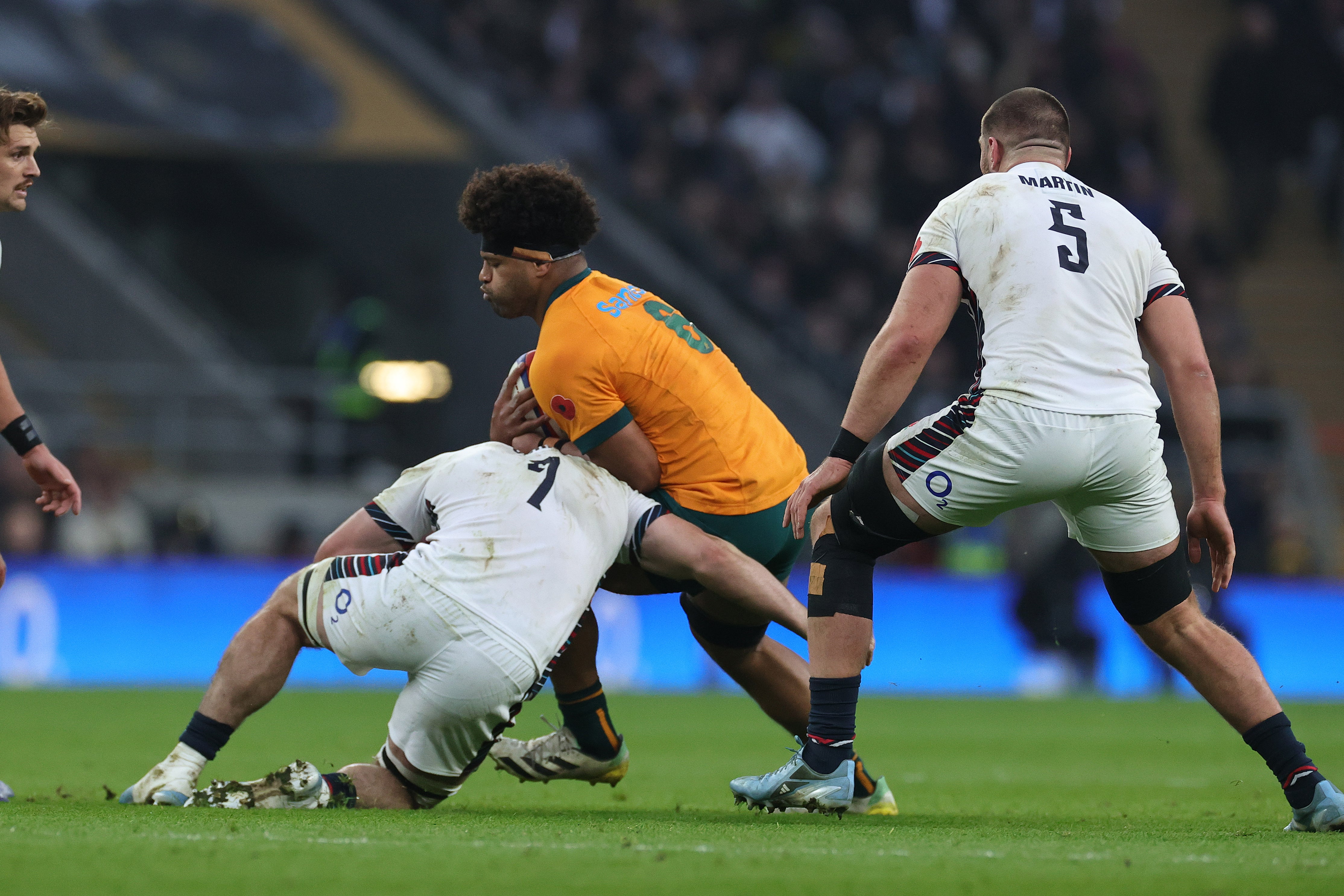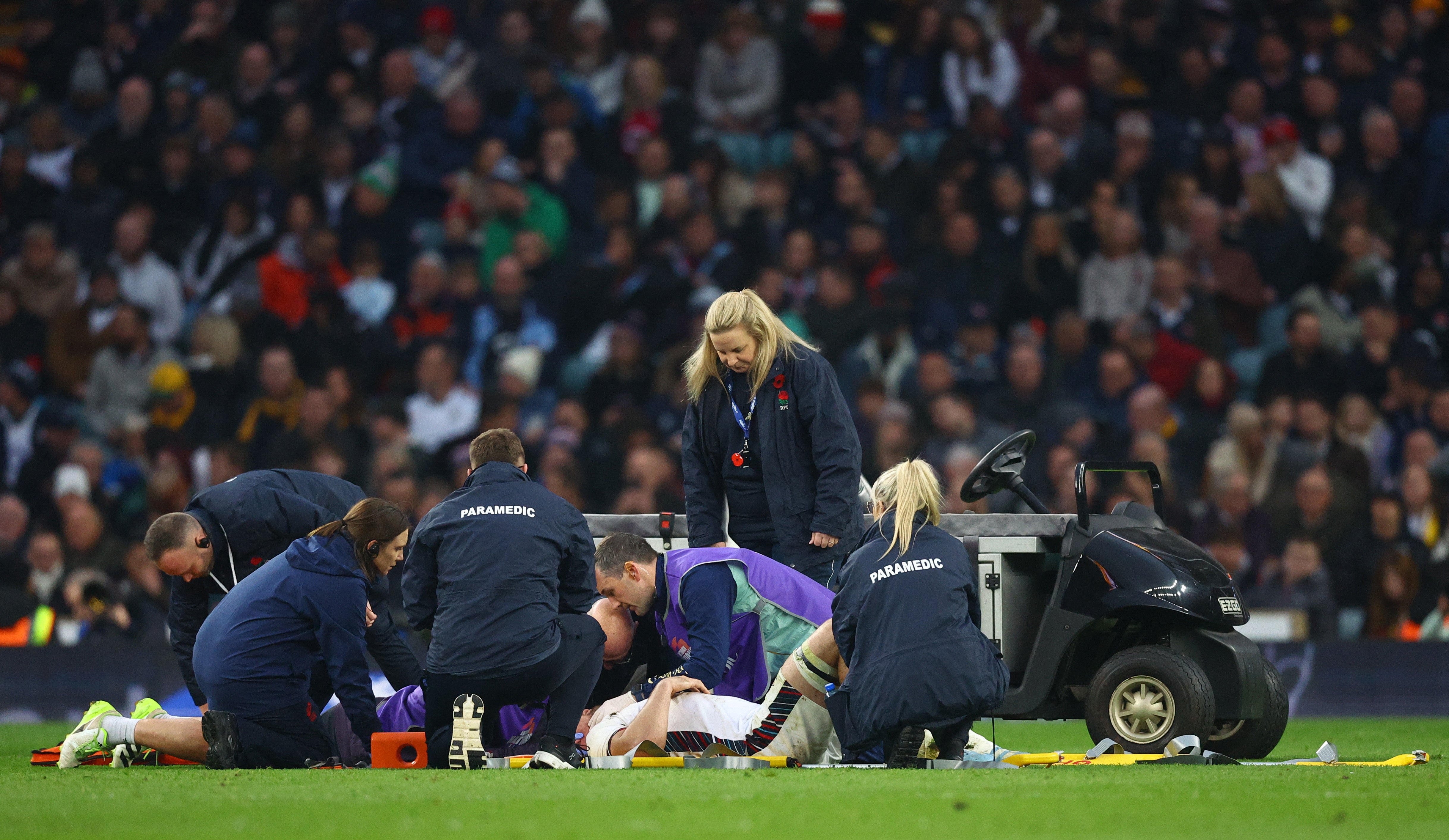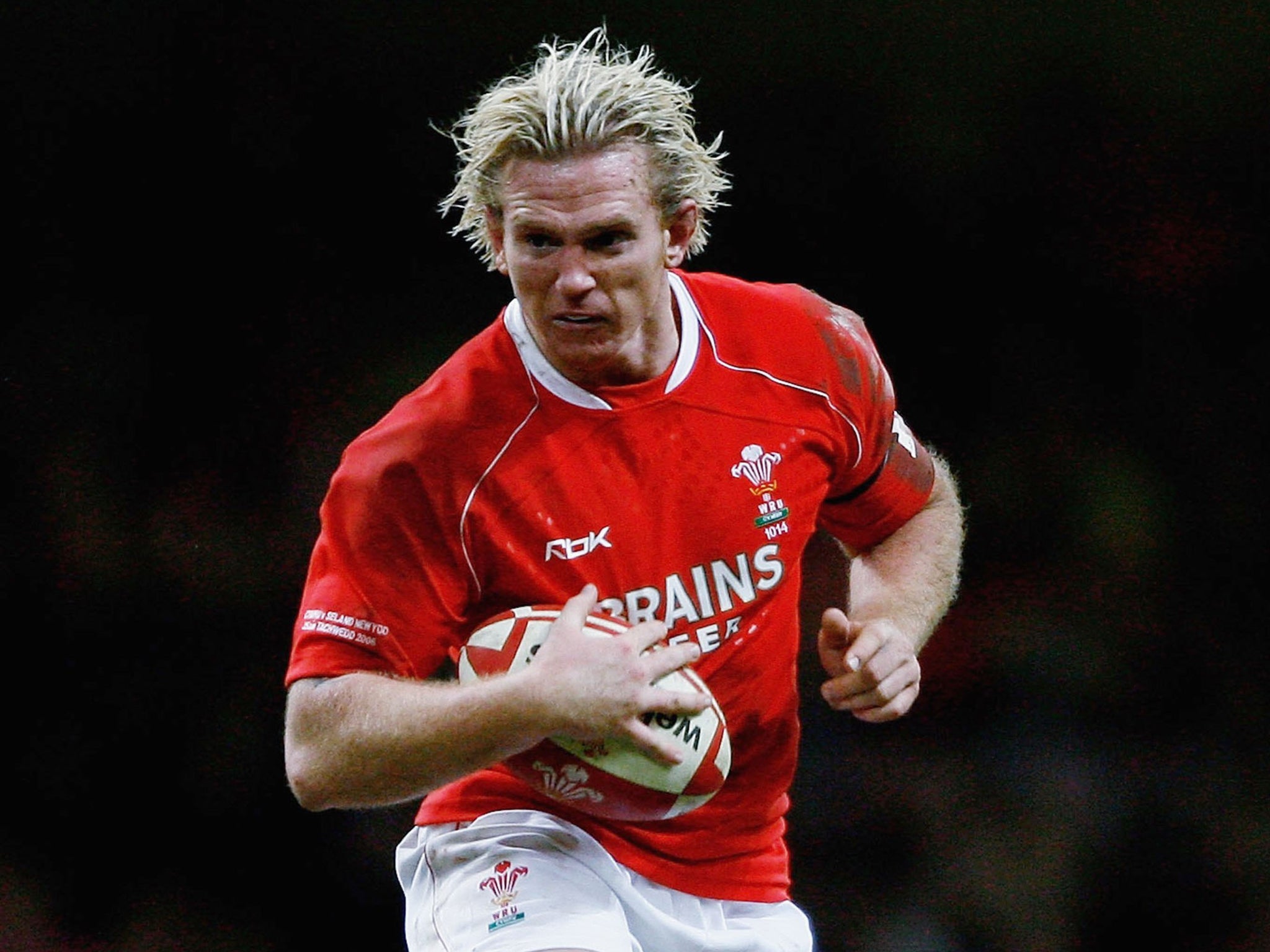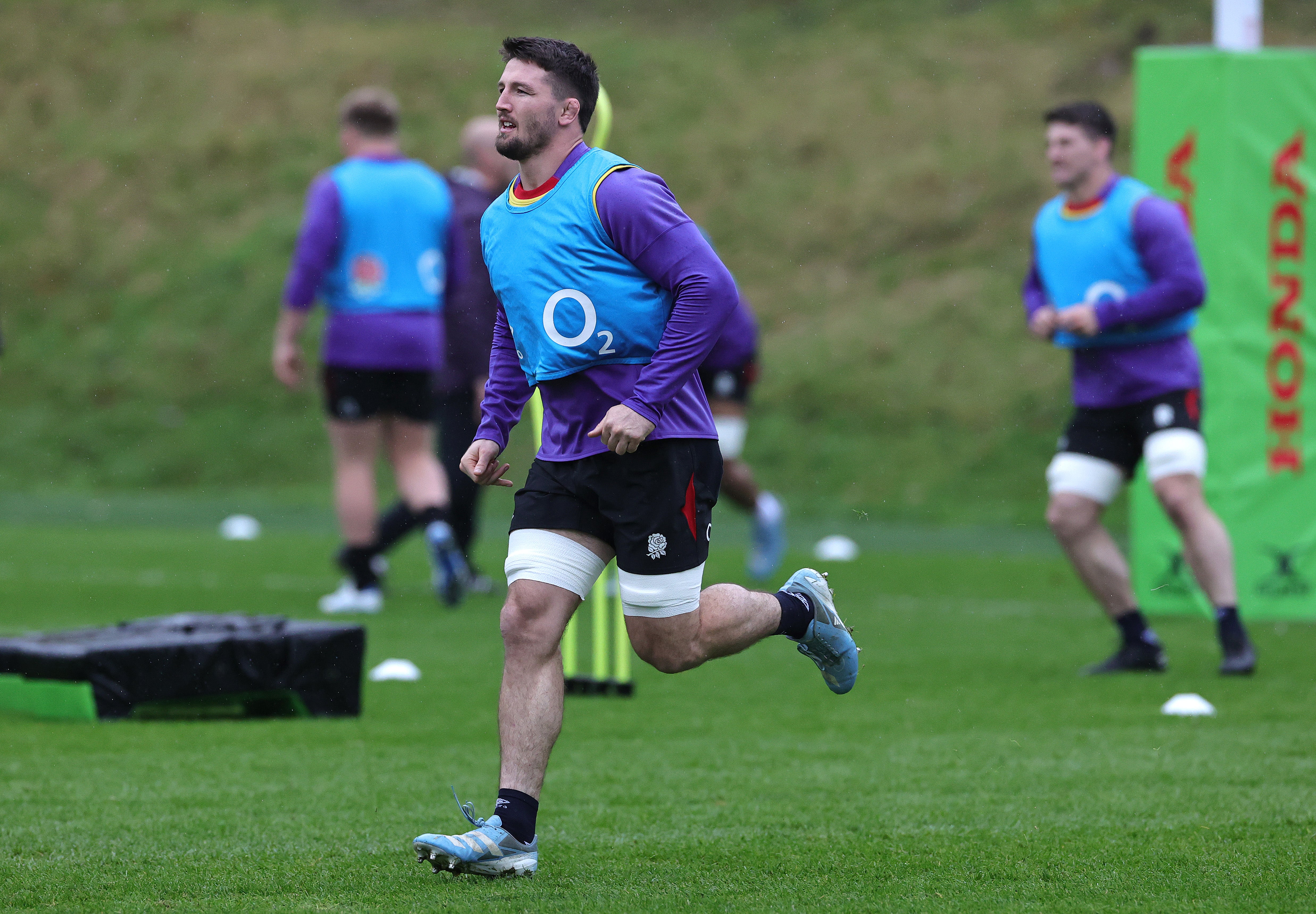Your support helps us to tell the story
From reproductive rights to climate change to Big Tech, The Independent is on the ground when the story is developing. Whether it’s investigating the financials of Elon Musk’s pro-Trump PAC or producing our latest documentary, ‘The A Word’, which shines a light on the American women fighting for reproductive rights, we know how important it is to parse out the facts from the messaging.
At such a critical moment in US history, we need reporters on the ground. Your donation allows us to keep sending journalists to speak to both sides of the story.
The Independent is trusted by Americans across the entire political spectrum. And unlike many other quality news outlets, we choose not to lock Americans out of our reporting and analysis with paywalls. We believe quality journalism should be available to everyone, paid for by those who can afford it.
Your support makes all the difference.
A hush descended on Allianz Stadium as an apparently knocked out Tom Curry received treatment from the medics while he lay prone on the Twickenham turf. The England flanker’s head had collided with the knee of Rob Valetini as he tried to tackle the rampaging Australian back row and he appeared to be out cold.
It was actually Valetini himself who realised the severity of the situation and urged referee Ben O’Keeffe to stop the game so Curry could be treated more quickly. Thankfully, a few minutes later, Curry walked off the pitch with the help of the medical staff and was even able to offer a wan smile as he was clapped by the capacity crowd.
Unfortunately, the 26-year-old Curry is no stranger to head injuries having sustained his previous one in mid-September while playing for club side Sale Sharks – his fifth concussion in two years. He also flew home early from England’s 2022 tour of Australia after sustaining a third concussion in six months.

His all-action, fearless style of play, that once saw him and Sam Underhill dubbed England’s “Kamikaze Kids” by Eddie Jones, seems to make him more susceptible to this type of injury. In old-school rugby parlance, Curry is “not afraid to put his head where it hurts” – a phrase traditionally delivered as a positive character reference and generally accompanied by a belief that after “getting your bell rung”, a quick dose of smelling salts should be enough for you to get back out there.
The Valetini collision happened during England’s dramatic 42-37 defeat to the Wallabies on 9 November and, just two weeks later, Curry looks set to be back on the pitch for Sunday’s clash against Japan, with all signs suggesting he will be in Steve Borthwick’s 23-man matchday squad when it’s named on Friday.
This remarkably quick return for a man who suffered the latest in an ever-growing number of brain injuries – which is what concussions are – raises uncomfortable questions for rugby and brings their concussion problem firmly back under the spotlight, if it ever actually retreated into the shadows.

It is worth remembering that rugby rolls on amid a lawsuit launched in 2020 against the game’s governing bodies by more than 200 former players, many of whom have been diagnosed with early-onset dementia, chronic traumatic encephalopathy (CTE) and other irreversible neurological impairments.
The testimonials from the likes of ex-Wales international Alix Popham and England’s 2003 World Cup-winning hooker Steve Thompson as to how their day-to-day lives are impacted by what they believe is the effect of head injuries sustained during their rugby careers are heart-wrenching.
The sport has responded to the tidal wave of medical evidence that has emerged over the last decade which details the lifelong impact that concussions and brain injuries have on the sufferers, by making some shifts towards limiting head contact and prioritising player welfare.
World Rugby cannot comment on the specifics of the lawsuit for legal reasons but insists that “rugby remains at the forefront of managing concussion and reducing head impacts in general” and highlights initiatives such as smart mouthguards, lowering the legal tackle height in the community game and its ever-evolving head injury assessment (HIA) protocol. For example, back in 2022, it introduced a new protocol stating that any player with a history of concussion or who is removed from a match with obvious concussion symptoms must sit out at least the next 12 days rather than undergo a seven-day HIA process as previously.
The fact that new World Rugby chair Brett Robinson has a medical degree and was a research investigator in a concussion study involving the Queensland Brain Institute has also led to optimism that making the game safer from a head injury perspective will be a genuine priority. In some ways, the issue is an existential threat to the very future of the game.
However, Popham remains unconvinced by the steps taken. “The measures basically put in place since we went public [with the lawsuit] are a lot of smoke and mirrors,” he told AFP in an interview earlier this month. “The changes that need to be made are not being made. If we are looking in the mirror, we are not being 100 per cent honest on real issues here. Some big, big changes need to be brought in.”

Among Popham’s ideas for improvement are “rest periods after head injury, regular MOTs, annual tests for players and tests to pick up on any brain damage from the week before”, as well as limiting contact in training.
The Curry situation once again brings these issues into sharp focus. To be clear, there is no suggestion of any wrongdoing at all on England’s part – they have gone through the HIA protocol as it currently stands and their man has been deemed fit and ready to play. As assistant coach Andrew Strawbridge explained earlier this week, they are also working with the flanker on his tackle technique to try and limit future head impact.
Curry himself has previously expressed no concern about the situation, saying in a 2022 interview: “Rugby is being put into a better spot with research and what’s going on. I’ve got full confidence in my long-term health. I’ll let the scientists take care of that and let’s crack on and play rugby. If the research backs the change to the protocols then I’m all for it. At the end of the day my job is to play rugby.”
And who can blame Curry? In the cauldron of international sport, there is little room for doubt or fear of the future to creep in – by necessity players must live in the moment.
You also cannot simply rely on players either knowing or being honest about how they feel – although instances of players self-reporting concussion symptoms as England winger Immanuel Feyi-Waboso did during the Six Nations this year should be commended. Incidentally, Feyi-Waboso also suffered a head injury during the recent game against Australia but has not recovered sufficiently to feature against Japan this weekend.

Rugby must make the right decisions for the safety of its players, even if those calls are often tough or unpopular. Regarding Curry’s potential return this weekend, player welfare group Progressive Rugby voiced its displeasure at the situation.
It wrote: “It is hugely disappointing to see a further example of player safety being placed secondary to the desire to play by player and/or management. Early return after a concussion carries a significant risk of further damage and trauma.”
Similarly, journalist and author of award-winning book Concussed, which examines contact sports’ relationship with head injuries, Sam Peters posited on social media that were Curry a boxer, “he would be nowhere near a ring” given his multiple concussions over the past few months.
Only Tom Curry and the medical team around him know the specifics of his head injury and speculation is ill-advised, but rugby once again has serious questions to answer about an issue that will define its future.






